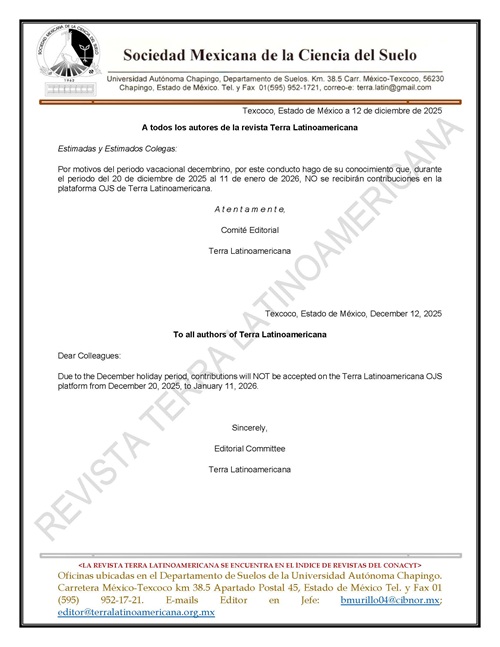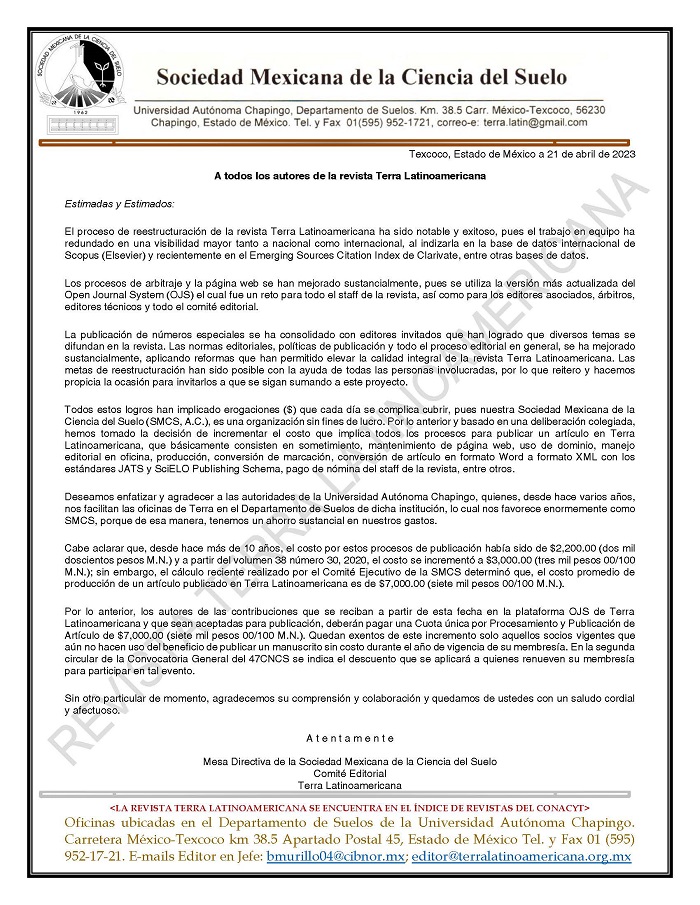Tolerance to water stress in varieties of basil (Ocimum basilicum L.)
Keywords:
drought, arid zones, biomass, herbsAbstract
The evaluation of crop tolerance to drought indices are important in order to recommend the most productive crops to grow when water resources are insufficient. In this study, the tolerance to water stress of twenty varieties of basil in stages of germination, seedling emergence and early growth using morphometric variables was evaluated. In the germination stage two drought treatments were simulated with PEG-8000 with water potentials of -0.75 MPa, -1.50 MPa and distilled water as a control; during seedling emergence the treatments consisted of maintaining the water potential of the substrate at -0.75 MPa, -1.50 MPa with a control group based on irrigation at field capacity; and early growth was tested by the loss of turgor method without inflicting permanent wilting damage, the control group was determined by the water irrigation of field capacity. In the early stages of germination and emergence, tolerance was evaluated based on the rates of seedling height, radicle length, fresh and dry biomass of radicle and fresh and dry biomass of shoot. Initial growth tolerance indices were calculated for plant height, root length, fresh and dry biomass of root, fresh and dry biomass of stem, fresh and dry biomass of leaf as well as leaf area. Through the hierarchical cluster analysis of complete linkage on the basis of the Euclidean distance, varieties clustered into four groups according to tolerance indices measured at the germination stage, into three groups based on measurements of seedling emergence and into two groups based on the initial growth stage, indicating the existence of genetic variability in the varieties tested, outstanding as the most tolerant of these was the variety Dolly for the three stages, while Sweet Genovese was the most susceptible to water stress.
Downloads
Publication Facts
Reviewer profiles N/A
Author statements
- Academic society
- Terra Latinoamericana
- Publisher
- Mexican Society of Soil Science, C.A.
















